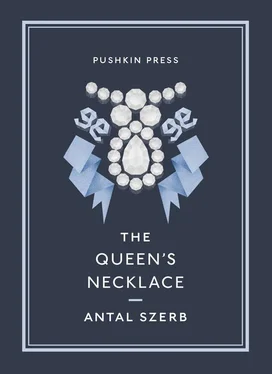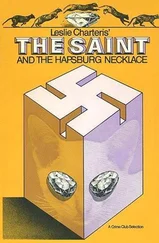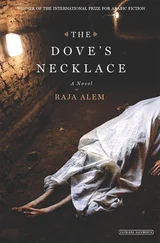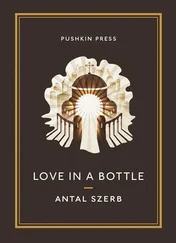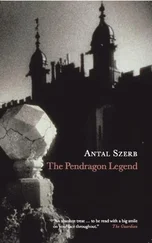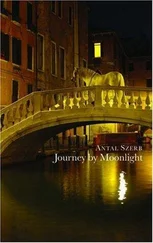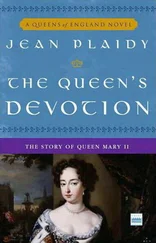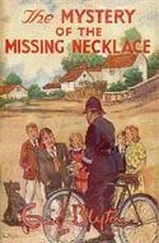Very few people — including those who feature in our narrative — ever saw the necklace, and later we shall learn why. It never hung from anyone’s neck, nor, like some sort of curse, did it bring down disaster on those who wore it. But, as with the Nibelungs’ treasure in the depths of the Rhine, the short period of time it spent on earth was enough to alter the course of destiny. Diligent research carried out recently among the firm’s papers has unearthed the original design, and it is perfectly clear what it was to be: not, we fear, very beautiful. It was to be so impossibly, so barbarically, huge, so like some ancient ‘treasure’ dug up from an age of nomadic wandering, that it was more likely to have provoked raw amazement than raptures of delight. It consisted of three chains of diamonds from which were suspended diamond medallions, the third and longest chain having several strands and ending in four diamond tassels.
The jewellers originally intended it for the Comtesse du Barry, or rather, they hoped that Louis XV would be persuaded to pay for it. But Louis died suddenly of smallpox, alone and forsaken, Du Barry went into exile at Louveciennes, and the great sic transit required Boehmer and Bassenge to look for a new gloria mundi . They offered it to the Spanish Court, but the people there took fright at the asking price.
It soon occurred to them that there was one person in the world whom fate had clearly singled out to own such a treasure — the young Queen of France, Marie-Antoinette. History tells us that the kings and queens of old were fond of jewellery, but among Marie-Antoinette’s circle this fondness amounted to an ungovernable passion. She did of course have other jewellery, as did other queens. From her home in Vienna, Marie-Antoinette had brought a vast quantity of diamonds in her trousseau; then her husband’s grandfather Louis XV showered her with diamonds and the pearls left by his late daughter-in-law, Marie-Josèphe of Saxony. Among these was a necklace of pearls the smallest of which was the size of an aveline (a ‘tubular hazelnut’, according to Sauvageot’s dictionary: perhaps some American variety?). It had once been worn by Anne of Austria, and bequeathed by her to the Queens of France. Since Anne of Austria was the wife of Louis XIII, this could well be the very jewel that graced another famous neck, familiar to us all from Alexander Dumas the Elder’s The Three Musketeers .
The Queen could hardly accuse either Louis XV or Louis XVI of meanness, but the jewellery she had received so far was still not enough to assuage her passion. Because her mother, the wise and saintly Maria Theresa, was forever scolding her in her letters and telling her that her finest jewel was her youth, she kept her purchases secret. But Boehmer knew her inclinations well. In 1774 he had sold her a pair of earrings containing six diamonds and costing 360,000 francs — also created originally with the Comtesse du Barry in mind. Boehmer had wanted 400,000 francs, but the Queen took out two of his diamonds and replaced them with a pair of her own to reduce the price, and paid off the balance in instalments.
So Boehmer could still hope that the Queen would one day purchase his record-breaking item. But in this he was doomed to disappointment. She showed herself almost willing … it was just that she found the price too high. Even for a queen, 160,000 livres was a considerable sum, especially when things were not going well for her. With France’s most popular war ever in mind, the one fought against Britain over American independence, she declared: “We have more need of a warship than of any such necklace”.
But the jewel remained. And, like an unwanted and badly-stored body of radioactive material, it continued to emanate a silent, unseen, and fatal influence.
Here we must pause for a minute, take a breath, and give a little thought to the wider economic background to Boehmer’s enterprise. Because — this is important — creating jewellery in this way really was an enterprise. He was working not to complete a commission, as his predecessors, the great jewellers and goldsmiths of earlier centuries, had done, and as they say Benvenuto Cellini had worked, but for ‘the market’. Boehmer created this piece not to supply an existing demand but to create one. Moreover, the market he was operating in was extremely high-risk in character, since the number of buyers he could count on were extremely few.
The other surprising element in this is his notion of achieving some sort of record — a dream of greatness. Greatness had for many centuries been the prerogative of the two branches of the First Estate, the Church and the Nobility. A knight might think of astounding the world by some unparalleled act of courage; a holy man might hope to rouse the sleeping conscience of his fellow men by some unprecedented and horrifying form of self-denial. In more recent centuries, a thinker or scholar might have aspired to some work that would dwarf all previous efforts in his field. But the bourgeois, the merchant, the mere manufacturer? Even if he did amass a fortune, he would never have done so with the intention of achieving some sort of record, since there would always be those who had even more than he did. But nor was Boehmer simply trying to create a masterpiece, like his predecessors working in the ancient guilds. He wanted to set a new standard not in terms of his craft but as a entrepreneur — to create an item of jewellery not more beautiful but simply more expensive than any other. In his own way, he was a pioneer. And he suffered the pioneer’s usual fate.
We know of course that capitalism existed long before Boehmer, but his behaviour was an early example of the peculiar Anglo-American version of it that came to the fore in the second half of the nineteenth century. In his day, it must have been rare indeed.
This also makes him an excellent illustration of the idea that the Ancien Régime, the age of Louis XV and XVI, is not divided by some vast chasm from what came after the Revolution. Tocqueville, the great political thinker of the last century, tells us that, “In 1789 the French made the most thoroughgoing attempt of any people to ensure that their history would be divided into two distinct parts, with a deep gulf dividing what had been from what was to be.” But their more critical and objective successors could no longer take that claim at face value. Tocqueville saw, and for fifty years scholars have been very largely in agreement with him, that the Revolution did not create something new out of nothing. Rather, it was the sudden, almost miraculous ripening of everything that had been sprouting and budding for quite some time, and which would perhaps have come to fruition, only more slowly, had the Revolution never happened.
Which is what makes Boehmer’s enterprise so remarkable. It shows that the ur-capitalist mentality, with its drive for growth at any price, and its quest for unprecedented wealth, was already in place by the eighteenth century, creating upheaval and overturning whole worlds just as much then as it did later. It was not, as opponents of the Revolution insist, simply the result of institutions brought into being by that event.
There are other implications too. It is unlikely to have occurred to a jeweller to create a product of absolutely unprecedented size in a climate of national economic gloom. Such an ambition bears witness to the financial self-confidence of an entire generation, or indeed the whole country. It confirms that the Ancien Régime was witness to a strong economic upsurge. Tocqueville was the first to suggest as much, but it was only at the start of the twentieth century that two non-French scholars, the Russian Ardasev and the German Adalbert Wahl, working independently of each other, confirmed his insight using statistically-based scholarly methods.
Читать дальше
